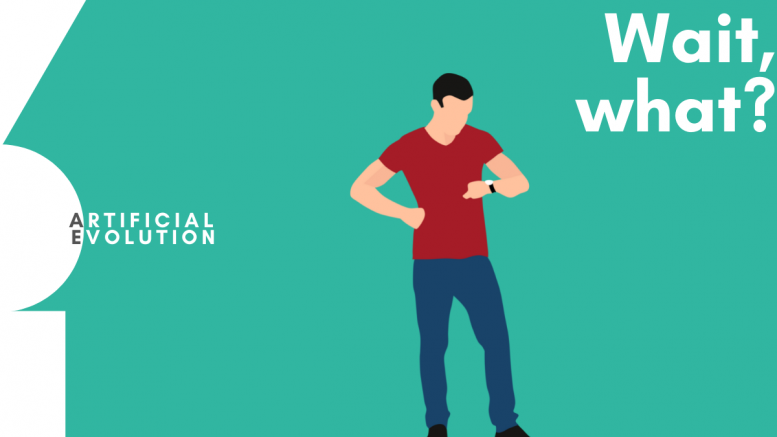Terms like “waiting time” or “waiting lounge” have taken on a whole new meaning with the evolution of pocket-sized entertainment in its current iteration – the smartphone. It has taken a weight off of so many “waiting(s)” in the real world that get casually dismissed until the battery runs out. The same cannot be said for the virtual world that seems to be on a wild goose chase expecting its audiences/customers to only wait a few seconds. It’s true – waiting a few seconds long for something in the online world is considered ‘lag’ or ‘hang’. For better or worse, this impatience is validated with something termed the “human factor engineering.”
What’s That?
As with so many things in the world that involve any kind of business, the genesis of human factor engineering is also rooted in psychology. In a line, human factor engineering is about understanding the scope of human and computer interaction and using the resulting analysis to improve and enhance online experiences. This subject is on the top of UI and UX design (interestingly explained in this video).
Fascinatingly, businesses globally are not holding out any hope for the improvement of the patience of their customers (and they are not wrong in making this decision). A Microsoft study revealed that attention spans have come down from 12 seconds in 2000 to mere 8 seconds by 2015 which is further corroborated by the Jampp study claiming that the attention spans continue to decline by 88% year on year. As it would seem, for the connected consumer of today, the virtual world has created an on-demand culture.
What Does it Mean for Business?
Keeping pace with the declining attention span is undeniably a dizzying experience. Yet, there is little choice for businesses that will either have to engage with their customers in real-time or miss the opportunity to grow (and eventually even sustain). Here are some statistics to understand how fast is right now:
- On the one hand, an average website takes around 10 seconds to load on a desktop and 23 seconds on mobile phones. Contrarily, Google research revealed that if a webpage takes any longer than three seconds to load, as many as 53% of the website visitors will leave.
- Even a single second delay in loading a webpage leads to a 7% loss in conversion
- The Google algorithm uses site and page speed to rank websites on the search pages which means that websites that take long to load might miss the chance to be viewed altogether.
This article further reveals some relevant statistics to truly analyse the impact of loading time on businesses.
It is not the fault of the customers that these expectations have been set (if you want, you can blame technology instead). And the emerging technology is only set to enhance connectivity and transparency for the consumer – right from live tracking for every e-commerce product purchase to enabling buying directly through social media platforms.
How to Keep Up with the Speed?
While the concept of instant gratification is not new, the ‘instant’ has undergone a change. But brands need not fret if they have pre-planned their strategy for a seamless virtual presence. Here is a planning checklist for brands to devise a smooth online game plan: –
- For the sake of relevance, provide instant information
What do you turn to when you need to know about something? Just as you do, your customers also turn to their smartphones to “look things up” if they need any information. And so, this is where your brand needs to be to showcase itself as a solution. For example, Google says that the search for “open now” has tripled over the last few years when compared to “store hours.” Translation: customers are expecting brands to cater to their most recent (and urgent) requirements and search for them accordingly.
- If it is not convenient, it is not done right
Just as with information, customers are also expecting products and services right now and businesses such as Amazon Prime or Uber have understood (some night say invented) this desire. This urgency arises with customers suddenly realising they need something and wanting to avoid the hassle and the time commitment of visiting a store to meet these requirements. They would much rather have things conveniently delivered to their doorstep and are even willing to pay a premium for it as is attested by the service-fee charges on apps.
- Don’t ignore the mobile
It is after all the device that is preserved as dear life itself. And, with mobile-only internet users having long exceeded desktop-only surfers, not curating the perfect mobile experience would be a mistake – particularly if your brand caters to millennials (not to call them out, but they are addicted to their phones). What it simply goes to say is that the attention is not disappearing but is being directed elsewhere. And for brands, this “elsewhere” is where they need to be.
- Make things quick
Never neglect the smooth functioning of the back-end of your website especially when it comes to onboarding and checkout. Ensure that both these touchpoints (initial and final) are optimised to the point of perfection so that customers keep coming back for a seamless experience. Simply reducing the number of forms to be filled or the steps for the checking out will ensure a great interaction with customers.
To conclude, brands only need to understand the needs of their new customers and synthesise accordingly. Pro tip: design patiently for the impatient user.
Stay curious. Stay secure.
See you next week.
The views and opinions published here belong to the author and do not necessarily reflect the views and opinions of the publisher.



Be the first to comment on "Wait, what?"